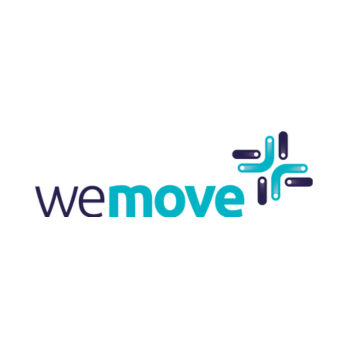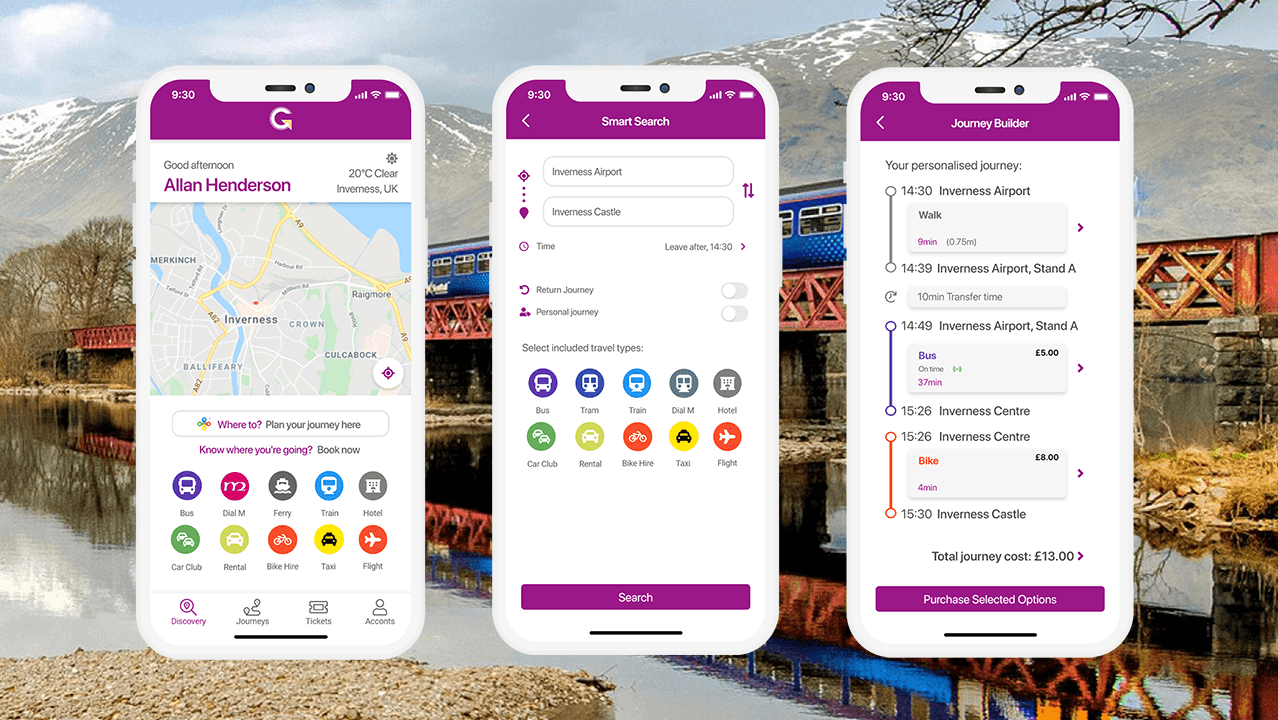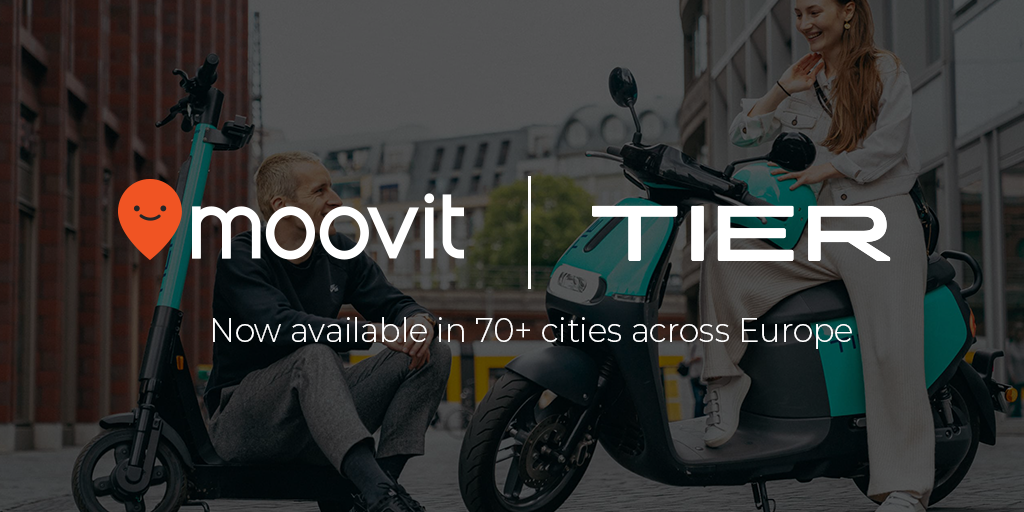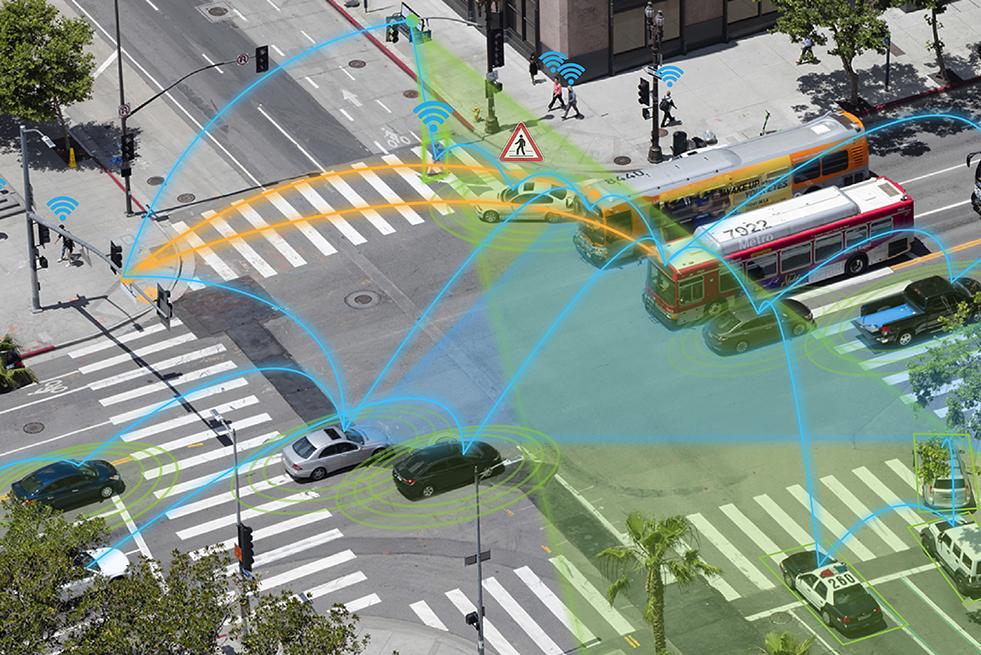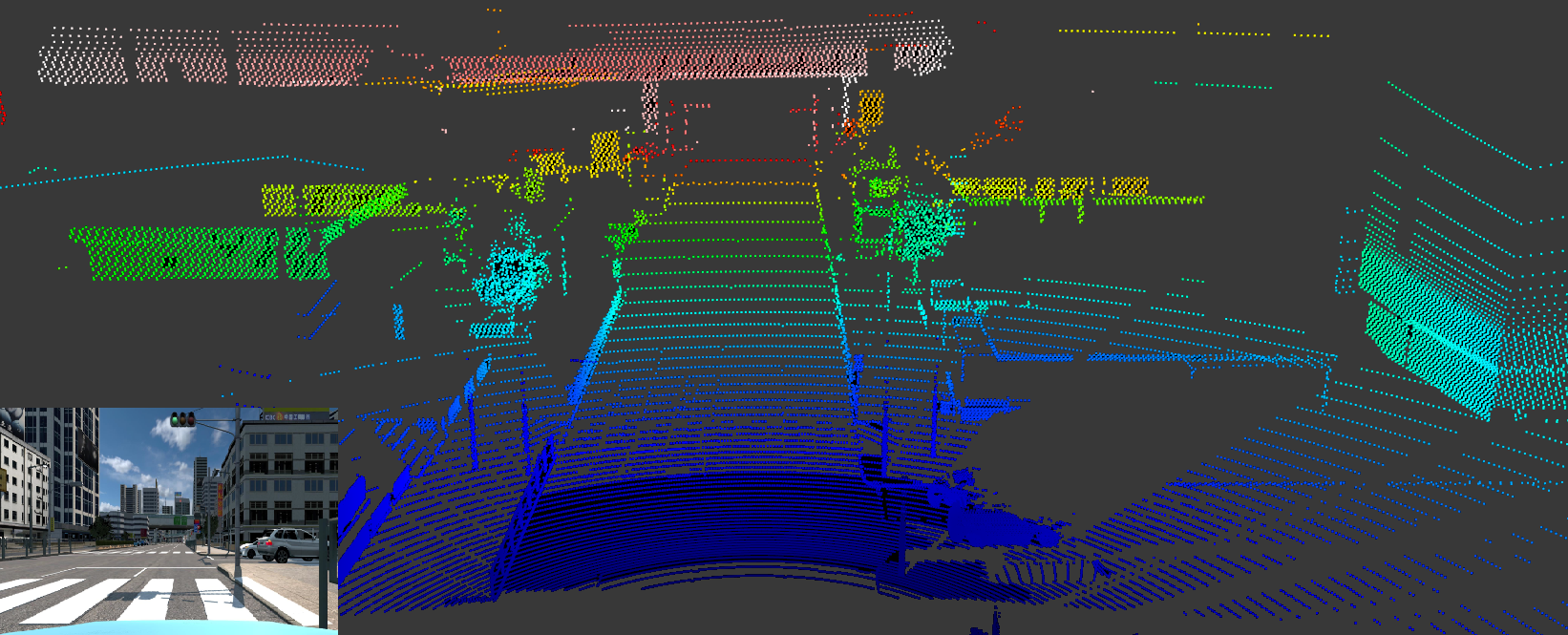Community-Led Flexible DDRT
New Year. New me. Time to pick up some good habits and drop some bad ones. It’s time to pick up James Clear’s awesome bestseller; Atomic Habits.
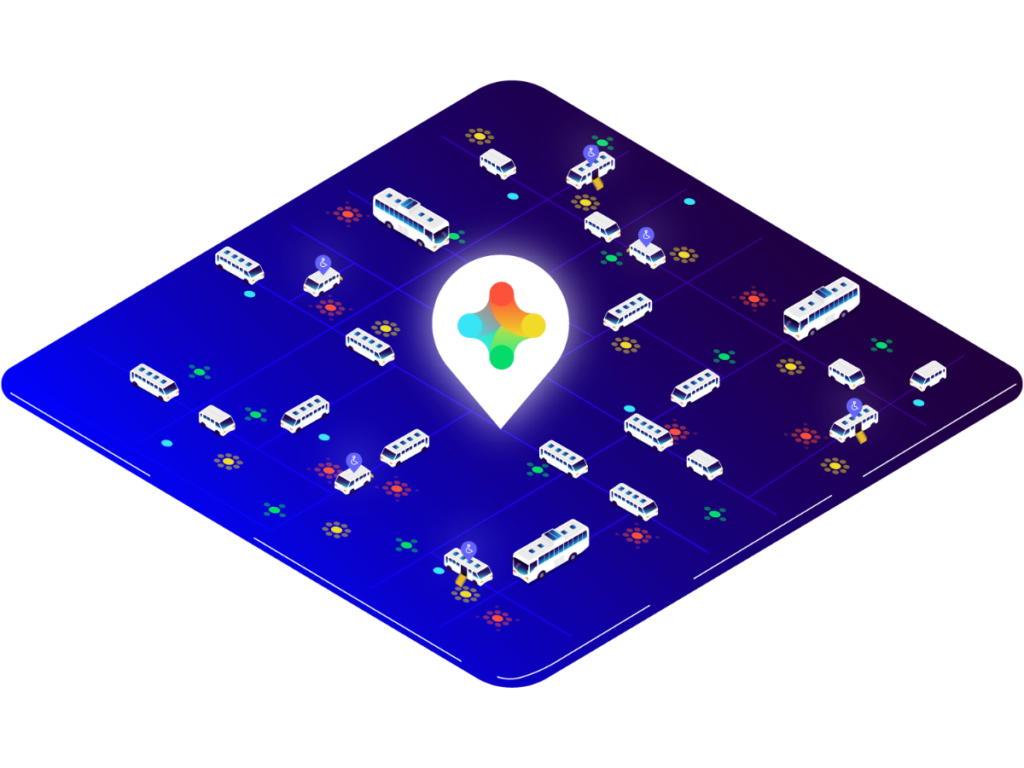
It’s a great read, very inspiring. Clear explains how habits are formed not through your goals and objectives, but by changing your identity; “I want a six-pack” becomes “I am an athlete” as you are more likely to follow through with your processes to reach your goal when your decisions are driven by “I am an athlete” or “what would an athlete do?”.
How does this, even remotely, relate to launching and running successful DDRT services?!
There are two conflicting objectives of DDRT services that form the classic DDRT trade-off. We want to spend the minimum amount of money on putting on a service that brings the maximum level of customer experience. The end goals are sometimes different but are always something we can agree on – a modal shift from single-occupancy cars to active and shared transport is a desirable outcome, better connectivity for rural residents is a desirable outcome, a higher provision of accessible travel options is a desirable outcome etc. The difficult part is how to balance the trade-off environment that the DDRT story is set in: Cost vs Customer Experience.
Balancing the Trade-Off
With Local Authorities, Universities and Businesses implementing DDRT at an increasing pace, different flavours of this trade-off are popping up in new DDRT services.
Scenario 1: When the Cost focus dominates, we see lots of ‘Under Supply’. This is where too little supply is funded to meet the demand which decreases the probability of a successful DDRT service as wait times, journey times and unfulfilled trip numbers are very high. As a resident trying the new DDRT service for the first time, if you download the app, create an account, put your card details in and then get a 50-minute wait time, you quite probably will delete that app forever as the transport service just isn’t reliable enough.
Scenario 2: When the Customer Experience focus dominates, we see lots of ‘Over Supply’. This is where too many Vehicles and Drivers are contracted to fulfil the amount of demand and the taxpayer pays for Drivers and Vehicles to sit idle whilst the DDRT project team tries to grow demand. Here, the business case for further funding beyond the trial period just doesn’t add up, and the residents either do not get the chance to benefit from a well-functioning DDRT service, or we massively overpay for it.
Scenario 3: Many DDRT schemes do not suffer from a dominating focus of either Cost or Customer Experience yet still suffer from Over Supply and Under Supply inefficiencies. When a Local Authority is reacting to growing demand, or seasonal fluctuations in demand, in a Single Operator Static DDRT operating model, inefficiencies arise due to (a) limited resources to monitor the demand data constantly and effectively, causing slow reaction times in altering the supply base (b) rigidness in procurement processes (c) the inherent modularity of a Single Operator Static DDRT operating model causing inefficiencies at ‘the margin’ (we’ll come back to this later).
We demonstrate these 3 main cases and their inefficiencies below:
Scenario 1:

Scenario 2:
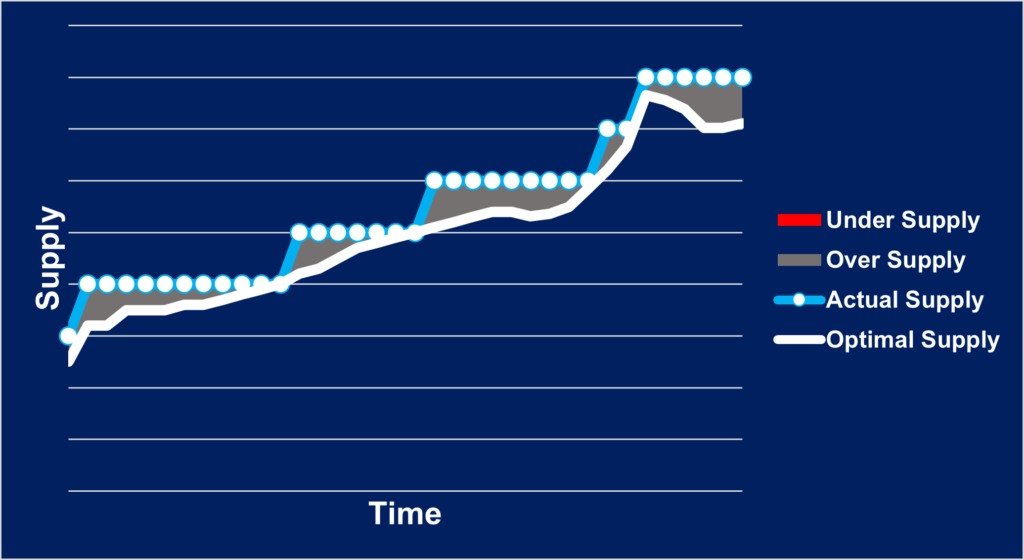
Scenario 3:
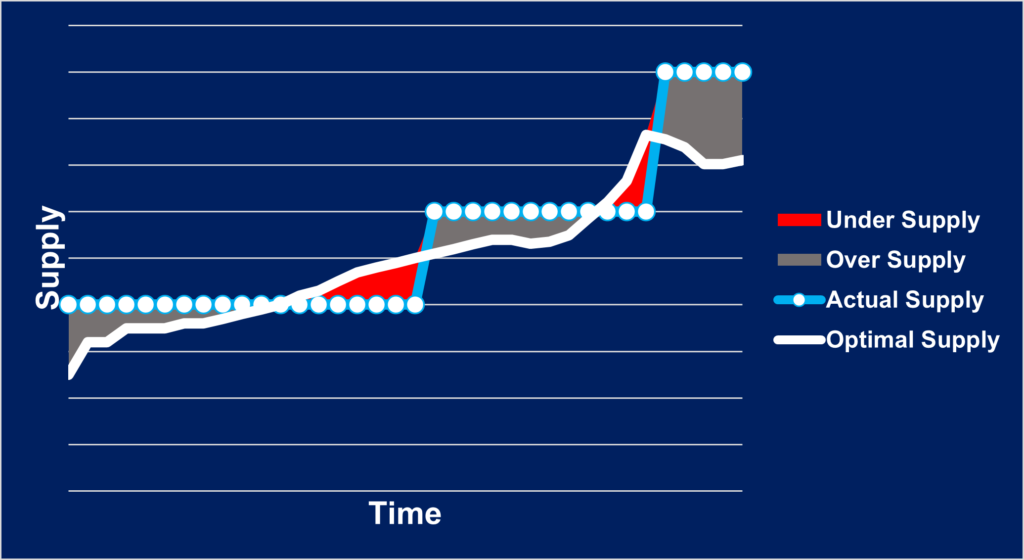
Over Supply and Under Supply are the two major pitfalls for DDRT. They are dangerous as even fluctuations in demand, week by week or hour by hour, can cause them. We see from the current best scenario, Scenario 3, that even a Local Authority, University or Business that have a balanced approach can become a victim of these pitfalls.
How do we find somewhere closer to equilibrium?
Community-Led Flexible DDRT
Scenario 4: A Single Operator Static DDRT operating model is where ‘blocks’ of Supply are procured in fixed amounts, usually from the same Operator. Supply levels are integers due to the static nature of procurement within this model, for instance, 3, 4, 5, 6… etc ‘Vehicle Days’ and ‘Driver Days’ are contracted to the service. As you can see in Scenario 3, this causes Under Supply moments as you hold off from putting on an extra vehicle at the margin and causes Over Supply when you put that additional vehicle on. The panacea of DDRT operation is to have Flexible Supply – where you have the process to identify the Optimal Supply level and the functionality to procure smaller ‘chunks’ of Supply to meet Demand flexibly:
Scenario 4:
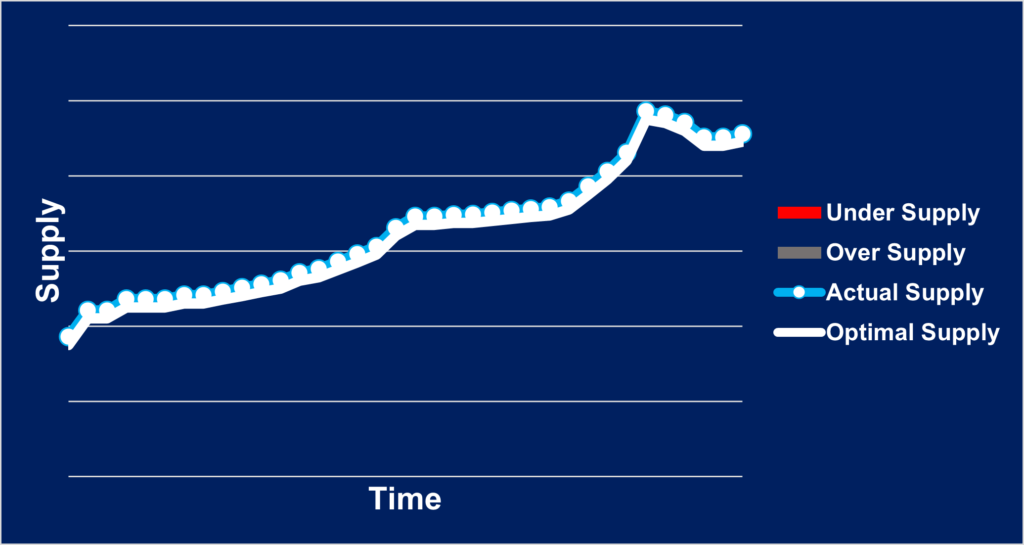
The inefficiencies are clearly gone in this system, the shaded area (which represents inefficiency) between the Optimal Supply line and the Actual Supply line is no more. No Under Supply, no long wait times, no long journey times, and a very high trip fulfilment rate. No Over Supply, no overpaying for vehicles sat idle, no paying for drivers sat on a break and a much lower supply cost per trip.
Great. The theory checks out, but this is the real world of Public Transport, how can we possibly achieve this equilibrium, or something close?
This model of DDRT operation is Community-Led and therefore Flexible in Supply. There are brilliant Operators all across the country from different lines of service, from Community Transport to Private Hire, from Home to School to SEN Transport, Car Share to Taxis. We onboard a network of these local Operators to dynamically fulfil the smaller ‘chunks’ of DDRT supply as and when needed, on top of the baseline Core service. We achieve a more Flexible system, with fewer inefficiencies, whilst local Operators get free DDRT training and the opportunity to increase utilisation of their vehicles.
Why Does it Matter?
At this early stage of standalone DDRT you may be thinking, what’s the point? Surely Over Supply doesn’t matter as the schemes are so small and Under Supply doesn’t matter because the Customer Experience isn’t hugely affected?
Well, we believe in the capabilities of DDRT technology; the likes of Via, Padam, Spare etc beyond standalone DDRT pilots. We believe that DDRT software will be adopted as the key enabling routing, matching, and dispatching software as different services, such as Non-Emergency Patient Transport, Community Transport, Taxi Transport and some Commuting Transport, become more integrated and start sharing resources.
In an integrated transport system with multiple services, you will be operating many, many more vehicles. Here, in a DDRT enabled integrated system with 20, 30, 50, 100 vehicles, the harm caused by Under Supply and Over Supply becomes amplified. The inefficiencies are magnified, the areas between Optimal Supply and Actual Supply become larger.
So, back to Atomic Habits. We cannot simply wish for the outcomes of “efficient DDRT services”, “self-sustaining DDRT services” and “perfectly operated DDRT”; this is akin to saying, “I want a six-pack”. You will go to the gym, be motivated for a while, but you haven’t changed your inner identity, you have not become an athlete who naturally makes the decision to continue with their processes, still get to the gym in the pouring rain and have the ongoing commitment to achieve the outcome.
There is a goal, there may be processes and KPI’s to try to achieve that goal but ultimately the identity is wrong. With DDRT, there is no use in wishing for a good outcome without changing the identity of the service itself. No matter how good your vision or how good your execution, a Single Operator System is the wrong identity for successful, scalable DDRT. Within a Community-Led Flexible DDRT system the incentives within the service are aligned – each Operator benefits from their specific role in the service.
A Quick Word for Community Transport
We’ve mainly focussed on the pure efficiency arguments in this article. We know that Community-Led Flexible DDRT is a better system for flexibility in Supply and therefore reducing inefficiencies dramatically, especially in larger DDRT services of the future. But a prelude to a more in-depth future article must be mentioned here, what role does, or should, Community Transport play in DDRT?
For years, many traditional DRT services, like Ring and Ride, have been operated by Community Transport Operators. These Operators often have the experience in providing a high level of service, not just on the KPI level but on the social value level. They have naturally enthusiastic, often volunteer, drivers who know their clients and for years have personalised the service for those most in need. Why should the digitisation of DRT not continue with the years of hard work the Community Transport providers have put in to serve these customers?
The Community Transport providers actually have the knowledge and relationships with the very customers that DDRT services want to also serve. So, instead of launching DDRT in isolation, and narrowing the target market, can we merge the years of hard work from Operators in the local Community, with the years of hard work of the Software Engineers to build the DDRT apps together, to create a sophisticated, technology-enabled, locally specialised service for all?
This article was originally published by WeDRT.

